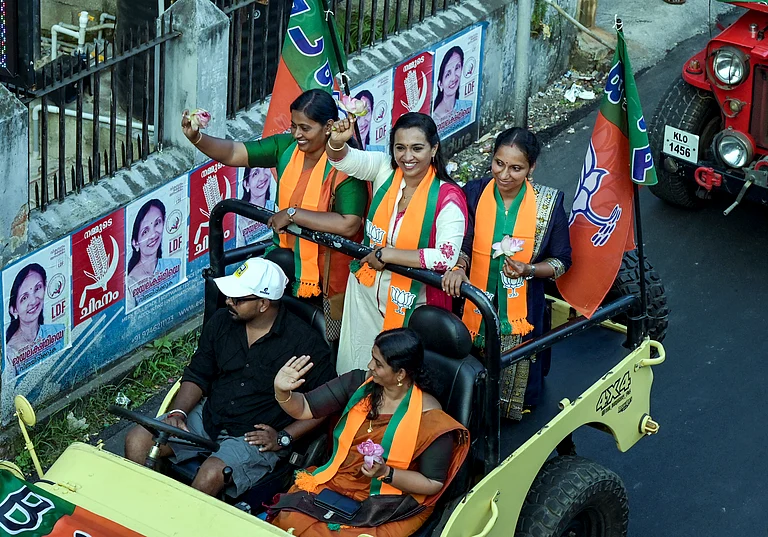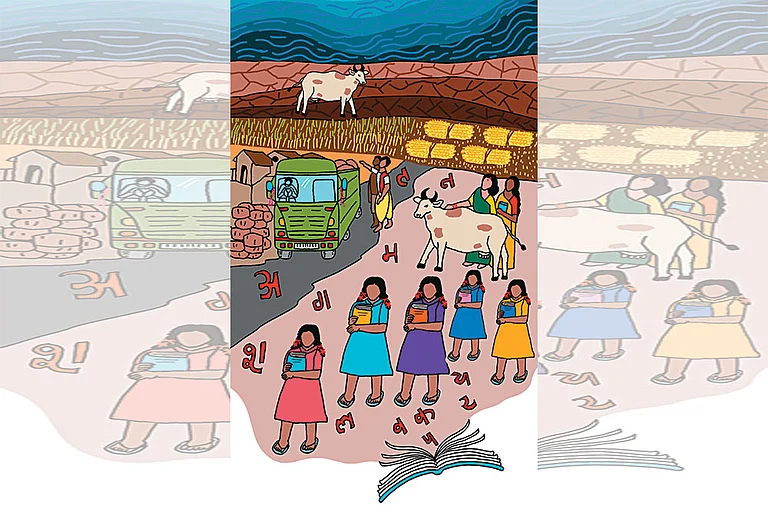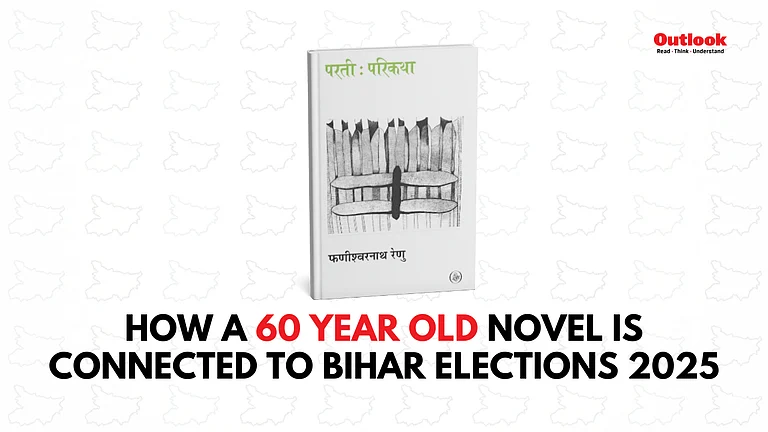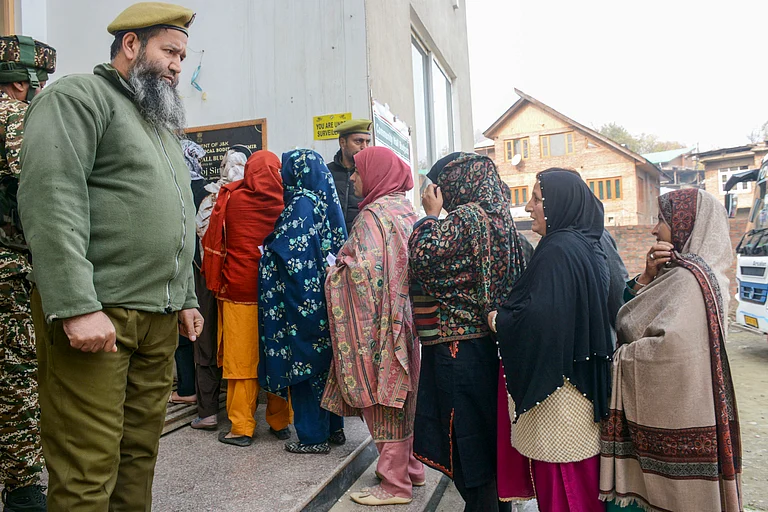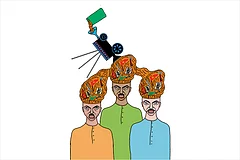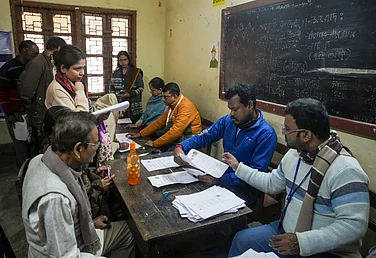On July 30, 1979, most national newspapers featured headlines declaring ‘Janata Party bans dual membership’, spotlighting the party’s decision prohibiting members from affiliating with organisations endorsing theocratic states.
Janata Party general secretary Ramkrishna Hegde openly targeted the Rashtriya Swayamsevak Sangh (RSS), affirming that members of the party would no longer hold dual membership. Little did they realise that this decision would alter the country’s political landscape permanently. The birth of the Bharatiya Janata Party (BJP), a nationalist organisation, soon followed, poised to reshape Indian politics in the years to come, marking a pivotal moment in the nation’s political trajectory.

As the BJP completes its 44 years on April 6, 2024, just a few days ahead of the upcoming Lok Sabha elections, it’s crucial to examine its journey. What were the political junctures that propelled the party forward? How did it become the largest political organisation in the country, boasting a formidable membership of 11 crore, as claimed by its officials? The ideological journey of the BJP mirrors the journey of India itself—from the pre-liberalisation era through the Mandal-Kamandal politics to the current condition, where ideology is both spatial and temporal.

In 2005, while releasing a book cataloguing 25 years of the BJP’s existence, veteran leader and once the unapologetic face of the Ram Janmabhoomi movement, L K Advani, stated that the Janata Party’s insistence on its members’ quitting the RSS led to the BJP’s formation. “Janata Party’s board cited our dual membership as a hindrance to progress,” said Advani. However, the party’s alignment with the RSS didn’t shape its early politics.

The BJP chose the moderate face of Atal Bihari Vajpayee to lead from the front, banking on inclusivity and non-dynastic politics, in contrast to the allegedly feudal politics of the Congress. In 1980, the party held its first convention at Bandra, Mumbai, where Vajpayee not only garlanded the statue of social reformer and marginalised leader Jyotiba Phule, but did Bhoomi puja for the programme that was conducted by prominent Dalit leader Dattatreya Rao Shinde. However, Vajpayee’s moderate politics didn’t yield much benefit, as in the 1984 General Elections, the party only managed to gather two seats with a 7.5 per cent vote share. Interestingly, Vajpayee himself lost the election by more than a two lakh margin while contesting against Congress strongman Madhavrao Scindia in Gwalior.

The displeasure within the Sangh regarding Vajpayee’s moderate stance, as claimed by scholars, stemmed from a crucial moment in Indian politics: the Shah Bano case of 1985. In this case, the Supreme Court ruled that the husband of the divorced woman in question, Shah Bano, must pay her maintenance allowance, leading to protests from the Muslim community, which saw it as judicial interference in the minority community’s personal laws. Fearing electoral backlash, the Rajiv Gandhi-led Congress government, in power at the Centre at the time, passed a bill in parliament overturning the SC judgment. This incident provided ammunition for the BJP to accuse the Congress government of ‘Muslim appeasement’, a charge that continued to tarnish the party’s image. This perception persisted despite the findings of the Sachar Committee Report in 2006, which suggested otherwise. The Report highlighted that the conditions of Muslims were worse than those of Dalits according to various indices.

During the same period, possibly to counter the appeasement charge, Gandhi opened the locks on the disputed site in the Babri Masjid complex, allowing the majority community to pray there. This action provided the BJP with a central electoral plank and they allied with the VHP in the Ram Janmabhoomi movement. On June 11, 1989, at its Palampur convention, the party passed a resolution asserting that the matter of Ram Janmabhoomi couldn’t be settled in a court of law. The resolution also stated, “According to all available records, Mughal emperor Babar visited Ayodhya in 1528, destroyed the temple situated at the site believed to be Ram Janmasthan and constructed a mosque in its place.”

The saffron party immediately reaped the benefits of the ensuing movement and in 1989 elections, winning 85 Lok Sabha seats and provided crucial support to VP Singh to form the government. The transition of the BJP from being a party with just two seats in Lok Sabha in 1984, to becoming a kingmaker in 1989, made it realise the potential of the Ram Janmabhoomi sentiment.
On the other hand, within months of becoming Prime Minister, VP Singh decided to implement the Mandal Commission report, which proposed giving 27 per cent reservation to the OBCs across sectors. This move sparked a significant uproar across the country, with upper-caste mobs taking to the streets against the affirmative action. Scholars point out that the RSS repeatedly urged the BJP to publicly denounce the report, but the party chose a different approach. “They knew well that the party couldn’t afford to lose OBC votes. So, what they could do was pit the politics of Mandir against caste politics, what people call ‘mandalisation’. Thus, the mandal versus kamandal politics took centre-stage,” says a political observer.
Advani started his rath yatra from Somnath to Ayodhya on September 25, 1990 and planned to culminate it at Ayodhya on October 30, after covering 10,000 kms. During his yatra, whose route reportedly witnessed several communal riots across states, Advani said, “They say that I am catering to Hindu vote bank but no, I am making nationalistic/patriotic vote bank.”
As Advani’s yatra reached Bihar, then chief minister Lalu Prasad Yadav’s arrest of the BJP strongman led to the downfall of the VP Singh government. Despite the BJP’s confidence in the upcoming elections, Rajiv Gandhi’s assassination shifted the popular sentiment, with the Congress ending up winning 244 seats compared to the BJP’s rise to 119 from 84 seats.
The BJP’s journey from moderate politics through the Hindutva plank to the idea of inclusive development makes it an accommodative party.
Despite its limited impact elsewhere, the BJP’s fortune shifted dramatically in Uttar Pradesh, the epicentre of the Ayodhya movement. The party’s assembly seats surged from 12 to 221, leading to Kalyan Singh heading the government in India’s most populous state.
Then came December 6, 1992.
The Babri Masjid demolition became a major political issue, following which CM Kalyan Singh resigned, taking responsibility for the incident. But it changed the BJP’s journey forever. Political scientist Mujibur Rehman says: “Shah Bano may have helped the BJP legitimise its allegations of ‘Muslim appeasement’ but what has worked in a big way for the BJP is the Ram Janmabhoomi movement. My sense is that the BJP would continue to reap benefits from this for several elections to both parliament and state assemblies until a genuine challenger emerges that could provide a new alternative.”
The Babri Masjid-Ram Janmabhoomi conflict propelled the BJP into political prominence, culminating in Vajpayee’s 13-day government in 1996. Despite winning over 50 per cent of votes in 35 seats, their total seat count remained stagnant at 120.
However, the instability of the coalition government benefitted BJP, say political scholars like Satish K. Jha says: “The BJP’s decision to opt for coalition politics subsequent to their failure to garner the support of political parties in their 13-day fiasco in government in 1996 was equally important for making BJP what it is today. It ended its isolation in Indian politics and put it on the path of a pan Indian political formation.”
In 1997-98, Vajpayee led another coalition government, overseeing the Pokhran nuclear tests, solidifying India’s nuclear status. Nationalist sentiment and stability concerns, coupled with the Hindutva agenda, catapulted the BJP to 182 seats in 1999, making them the primary partner of the ruling National Democratic Alliance coalition.
During Vajpayee’s apparently stable government, the political landscape in Gujarat was rapidly evolving. A few months after Narendra Modi replaced senior party leader Keshubhai Patel as Chief Minister, the state witnessed a horrendous communal riot in February-March 2002 in Godhra. Despite this turmoil, the BJP government under Modi’s leadership secured 127 out of 182 seats in the state assembly elections held in December of that year.
However, in 2004, neither the performance of the party in the state assembly elections nor the much-proclaimed ‘India Shining’ campaign worked in favour of the BJP. Debunking all presumptions and opinion polls, the Congress-led UPA won the general elections and Dr Manmohan Singh formed the government with external support from the left. The BJP was reduced to 138 seats. In the 2009 elections as well, the party could not make significant gains against the welfare schemes of the Congress.
But the corruption charges against the UPA II government and the movement led by Anna Hazare for implementing the Lokpal bill, alongside the campaign for Modi’s developmental plank, changed the fate of the party again in 2014 when they secured an absolute majority with 282 seats. The performance improved further in 2019 when they won 303 seats, making coalition partners dispensable.
Can this jump in seat-share be attributed to the party’s politics over Mandir politics? Data indicates something else. In 1996, while the party got only 19 per cent OBC votes, in 2019, the share rose to 44 per cent. The party’s percentage share of scheduled caste votes in 1996 was 14 per cent and rose to 34 per cent in 2019. In the case of Adivasis, the jump in vote share was from 21 per cent to 44 per cent in 1996 to 2019, respectively. Notably, though the percentage of Muslims voting for the BJP in 1996 was two per cent, as per research by KC Suri, professor of University of Hyderabad, it jumped to 8 per cent in 2014.
The BJP’s long journey from moderate politics through the Hindutva plank to the idea of inclusive development makes it a party that consistently accommodated political currents of the time. Rehman, while referring to the failure of Hindutva as the only agenda in the context of the recent Karnataka assembly elections, says, “When the (Basavaraj) Bommai government raised the hijab campaign (in 2022), he was advised not to push it further by its central leadership. The argument was, that such a campaign might help with two to three percent votes, but what matters is the development.”
MORE FROM THIS ISSUE
Against this backdrop, will developmental narratives further shape the political schema of the BJP or will it be the Ram Mandir? Or will the party accommodate a bit of both in the years ahead?
(This appeared in the print as 'A Roller Coaster Ride')








